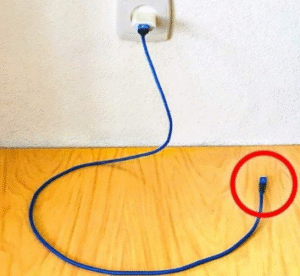Why You Should Never Leave Your Phone Charger Plugged in Without Your Phone
In today’s world, smartphones are practically extensions of ourselves. From the moment we wake up to the time we go to sleep, these little devices keep us connected, informed, and entertained. But while most of us take great care of our phones, we often overlook a small but important detail—the charger. It’s common to leave a charger plugged into the wall even when our phone isn’t connected. After all, it seems harmless, right? The reality, however, is more complex. Leaving your charger plugged in without your phone can lead to energy waste, higher electricity bills, potential fire hazards, and even shortened charger lifespan. Here’s why you should think twice before leaving that cord dangling from your outlet.
1. The Hidden Energy Drain
You might assume that if your phone isn’t attached, the charger isn’t using any power. But that’s not true. Modern chargers use a small but continuous amount of electricity as long as they’re plugged into an outlet. This phenomenon is called “vampire energy” or standby power consumption.
Individually, the energy drain from one charger may be tiny—perhaps just a fraction of a watt. But consider how many chargers and electronic devices you have in your home: phone chargers, laptop bricks, gaming consoles, smart TVs, microwaves, and more. According to the U.S. Department of Energy, standby power can account for 5% to 10% of household energy use, costing the average family around $100 per year. A plugged-in charger may not bankrupt you on its own, but added together, these little drains have a significant impact on both your wallet and the environment.
2. Increased Fire Risk
One of the more alarming risks of leaving your charger plugged in is the potential for overheating and fire. Chargers contain transformers and circuits that step down the high voltage from your outlet to the low voltage your phone can safely use. Even when idle, these components remain energized.
Over time, cheap or poorly made chargers can degrade. The insulation may weaken, wires may loosen, and components can fail. If a short circuit occurs while the charger is still connected to the wall, it could spark a fire. The risk is even greater if the charger is covered by fabric (like on a couch or bed) or plugged into a cheap extension cord that lacks surge protection.
While high-quality, certified chargers are much safer, no electronic device is completely immune to failure. By leaving your charger plugged in when not in use, you’re increasing the window of time something could go wrong.
3. Shortened Charger Lifespan
Chargers aren’t designed to last forever. Their internal components wear down over time with exposure to electricity, heat, and environmental factors. Leaving them constantly plugged in keeps their circuits under stress, even when no phone is attached.
That means the charger’s lifespan is effectively reduced, and you may find yourself replacing it sooner than expected. This is especially problematic if you’ve invested in an original charger from Apple, Samsung, or another major brand, which can cost significantly more than third-party versions.
Think of it like running your car’s engine while parked. You’re not moving anywhere, but you’re still putting unnecessary wear on the system.
4. Safety and Electrical Surges
Power surges—caused by lightning strikes, grid fluctuations, or faulty wiring—can send sudden jolts of electricity through your outlets. If a charger is plugged in during a surge, even without a phone connected, it can be damaged or destroyed. Worse, it might also damage your outlet or nearby electronics.
Using a surge protector is always recommended, but the simplest way to protect your chargers is to unplug them when not in use.
5. The Environmental Angle
On a global scale, millions of people leaving chargers plugged in adds up to staggering waste. A 2014 report estimated that idle chargers worldwide consumed enough electricity annually to power hundreds of thousands of homes. With climate change and energy demand becoming urgent issues, every small reduction matters. By unplugging your charger, you’re not just protecting yourself—you’re contributing to broader efforts to conserve energy.
6. The Psychological Factor
Leaving chargers always plugged in can create habits of carelessness with electronics. It reinforces the mindset that energy use is unlimited, when in reality every watt counts. Developing the small habit of unplugging when you’re finished fosters greater mindfulness about how we consume energy overall. It’s a tiny action with ripple effects: people who practice one energy-saving behavior are often more likely to adopt others, like turning off lights or reducing water waste.
7. What About Smart Chargers?
Some newer chargers are marketed as “smart” or “energy-efficient,” designed to draw almost no power when not actively charging. While this is a step in the right direction, “almost none” isn’t the same as “zero.” Even efficient chargers still consume a small trickle of energy.
More importantly, the other risks—overheating, reduced lifespan, fire hazards—remain. So while smart chargers may be safer, unplugging them is still the best choice.
8. Practical Tips for Safer Charging
If constantly plugging and unplugging feels like a hassle, here are some practical steps:
-
Use a power strip with a switch: Plug all your chargers into a strip and switch it off when not in use.
-
Invest in a charging station: Some charging docks are designed to cut power completely when no device is connected.
-
Avoid charging on flammable surfaces: Don’t leave chargers on beds, couches, or under pillows.
-
Inspect your chargers regularly: If you notice frayed cords, discoloration, or excessive heat, replace them immediately.
-
Stick to certified products: Cheap knock-off chargers are notorious for poor safety standards.
9. A Story That Hits Close to Home
To illustrate how real the risk can be, consider a case reported in 2020: a family in England left a phone charger plugged into a socket near their sofa. One night, the charger overheated, sparking a small fire that spread quickly through their living room. Thankfully, no one was hurt, but the damage to their home was extensive.
It’s easy to dismiss warnings as exaggerations—until it happens to someone close. That’s why taking preventive measures matters.
Conclusion: A Simple Habit, Big Impact
Unplugging your charger when it’s not in use might seem like an inconvenience, but the benefits far outweigh the effort. You’ll save energy, reduce the risk of electrical fires, extend the life of your charger, and do your part for the planet.
In a world where we’re constantly looking for ways to cut expenses and live more sustainably, this is one of the easiest habits to adopt. The next time you unplug your phone, take the extra second to unplug the charger too. It’s a small act of responsibility that protects your home, your wallet, and the environment.
Remember: sometimes the simplest choices—like pulling a tiny plug from the wall—can make the biggest difference.


